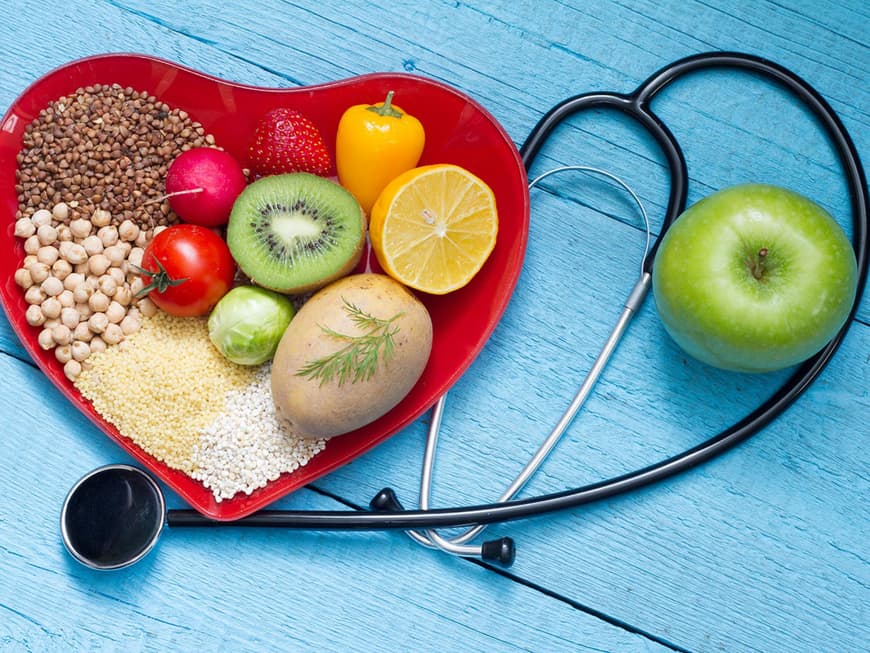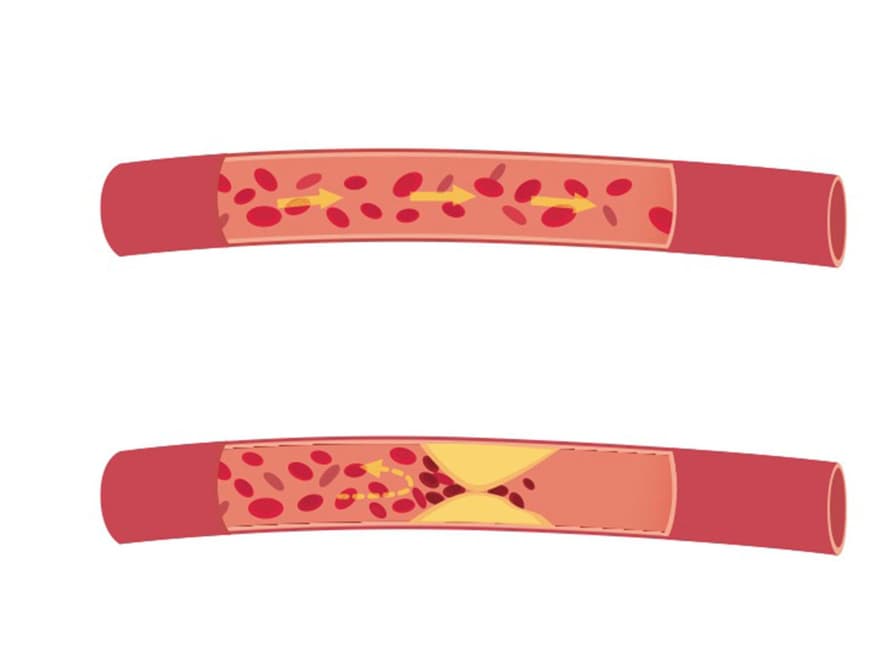It is a fat, 90 percent of which is produced in the cells and liver, i.e. in the body, and the rest is absorbed through food. For a long time it had a bad reputation - too much cholesterol in the blood is deposited in the blood vessels, causes the arteries to calcify and can even trigger a stroke or heart attack. Although this is true, it is somewhat more complicated.
We need it for our metabolism
Cholesterol fulfills a variety of tasks in the body. We must not have too much of this blood fat, but not too little either. Otherwise our body will not function properly. Cholesterol is involved in the structure of the cell membrane, in the formation of bile acids for fat digestion, in the production of hormones such as oestrogen, cortisol and vitamin D. It is not soluble in water and is packaged in protein-containing envelopes in order to reach the organs. The brain's metabolism is also dependent on cholesterol. However, the body produces most of it itself in the liver. Only around a fifth of the total cholesterol in the body is taken in with food. Moreover, the fat-like substance, which for decades was considered the main cause of dangerous deposits in the blood vessels, is not the sole culprit. Today we know that calcification is largely due to the saturated fatty acids in butter, liver sausage and the like. Eggs, for example - which contain many good, unsaturated fatty acids - have been cleared of the accusation of clogging the blood vessels.
When the organs are saturated, the substance remains in the blood
A distinction is made between the "good" cholesterol HDL and the "bad" cholesterol LDL. LDL transports the cholesterol from the liver to the organs, HDL collects it again and brings it back. And now the cholesterol level comes into play: If there is already enough LDL in the organs from food, then it is not utilized there, but remains in the blood and is deposited in the veins, the level rises. The deposits ultimately mean that the blood can no longer flow properly. The total cholesterol level should not exceed 200 mg.
The limit value must be reassessed
A high cholesterol level should be kept in mind because it also promotes deposits. But what is high? The value of 200 mg/dl, which has marked the upper limit for many laboratories for decades, is now considered outdated. If it is taken as a benchmark, around a third of the population would have a cholesterol level that is too high - including young, sporty, completely healthy people. Experts consider a new limit of 300 mg/dl to be realistic.
Total cholesterol is not the decisive factor
Excluded from this upper limit are high-risk patients with diabetes, severe obesity or pre-existing heart conditions. In any case, the determination of two individual values is much more meaningful than the total cholesterol in the blood: LDL and HDL. The useful HDL should be over 40 mg/dl for men and over 50 mg/dl for women, while the bad LDL should ideally be no more than three times as high. A very low LDL value below 70 mg/dl is recommended for the risk groups. Many plant-based foods have a favorable effect on the ratio of HDL to LDL: Apples, pears and blueberries lower unhealthy cholesterol and promote healthy cholesterol. British researchers found that an apple a day protects against a heart attack almost as well as so-called statins, cholesterol-lowering drugs. Four cups of green tea a day have a similar effect.
The cholesterol cycle
The body's own cholesterol is mainly produced in the liver, where it is also broken down again. Directly on site, it serves as a building block for bile acid, which is produced for digestion in the small intestine. Another part of the cholesterol is transported to other organs via the bloodstream.
In order to be transported through the blood, it needs the so-called lipoproteins to which it binds. These can be divided into HDL (High Density Protein), LDL (Low Density Protein) and VLDL (Very Low Density Protein). While LDL and VLDL are already heavily loaded and mainly release cholesterol to the organs, HDL has a higher absorption capacity. The useful cholesterol transporter collects additional cholesterol on its way and delivers it to the liver for disposal.
If there is too much LDL or VLDL in circulation, the body cannot bind the free cholesterol. It is deposited on the walls of the arteries that supply the heart with blood. In the long term, this leads to congestion, which can result in a heart attack.
Cholesterol levels can be influenced with the help of diet
To reduce bad LDL cholesterol, you should pay attention to your diet: don't eat too much sausage, meat and chips, but rather lots of vegetables, salad and nuts. Contrary to what has been assumed for many years, eggs have hardly any effect on cholesterol levels. So you can eat as many as you like. The perfect heart-protective diet is based on a Mediterranean diet. Sea fish, avocado, olive oil and walnuts contain valuable omega-3 fatty acids, which, like the red pigment lycopene in tomatoes, prevent deposits. Sulphur compounds and alliin in garlic have a blood-thinning effect, dilate the arteries and slow down the body's own cholesterol production. As a small cure, a morning porridge is a good idea - just 40 g of oat bran or 80 g of oat flakes provide a load of cholesterol-lowering beta-glucans and lots of useful fiber. If you like, you can even have a healthy snack: A rib of dark chocolate (85% cocoa) a day stimulates the blood metabolism and strengthens the blood vessel walls.
Plenty of exercise ensures a healthy balance
A balanced diet and a moderate body weight are the best foundation. If you support this with sufficient exercise in everyday life - for example, by cycling to work regularly and avoiding smoking - you are laying further strong foundations for a strong cardiovascular system.
You might also be interested in this:
Lowering cholesterol: The 10 best foods
15 nutrition tips: What you should know about healthy eating
Better for the heart: Exercise for type 2 diabetes
Saturated and unsaturated fats: What is really healthy?
Lose weight better: Which diet is right for me?
Cholesterol value: What does it actually say?


